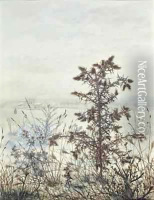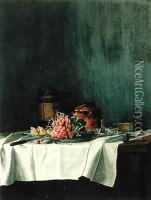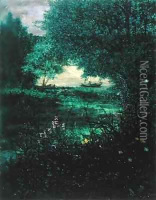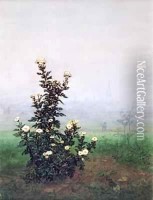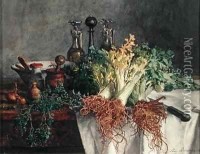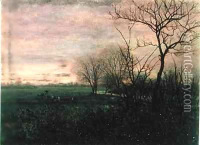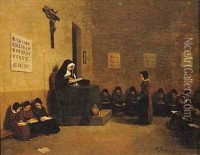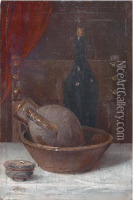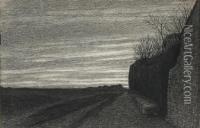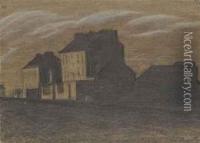Leon Bonvin Paintings
Leon Bonvin was a French watercolorist and draftsman, whose life story is as poignant as his art. Born on September 14, 1834, in Vaugirard, now part of Paris, France, Bonvin was largely self-taught, influenced by his older half-brother François Bonvin, who was a well-known realist painter. Despite the lack of formal art education, Leon Bonvin developed a unique style, focusing on still lifes and landscapes that combined a meticulous attention to detail with a poetic sensitivity to the natural world.
Bonvin's career was short-lived, largely due to his tragic and untimely death by suicide in 1866, at the age of 31. During his brief career, Bonvin struggled to gain recognition and financial stability. He worked as an innkeeper alongside his wife to support his family, painting in his spare time. His artworks, characterized by their delicate and detailed brushwork, failed to attract significant attention during his lifetime, contributing to his despair and financial difficulties.
Despite his struggles, Bonvin's work was posthumously recognized for its quality and contribution to the genre of still life and landscape painting. His meticulous watercolors and drawings capture the beauty of everyday objects and scenes with a remarkable clarity and intensity of emotion. Today, Leon Bonvin's works are held in several prestigious institutions, including the Walters Art Museum in Baltimore and the Musée du Louvre in Paris.
The story of Leon Bonvin is a reminder of the challenges faced by many artists and the often posthumous recognition of their talents. His art, characterized by its intimate scale and exquisite detail, invites viewers to a closer contemplation of the natural and domestic worlds, making him a unique figure in the history of 19th-century French art.
